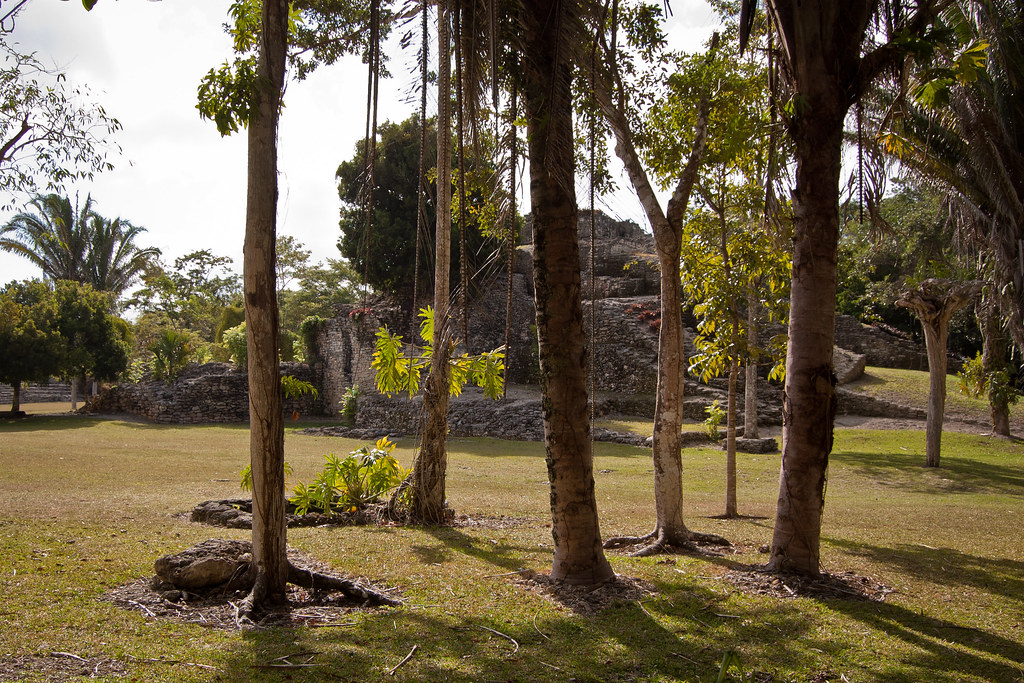
Above: One of the temples (Temple of the King) near the entrance of the site
Kohunlich is a large archaeological site of the pre-Columbian Maya civilization, located on the Yucatán Peninsula. The Spanish name does not actually derive from Mayan but from the English Cohune Ridge where cohune palm grew. The site covers about 21 acres, surrounded by dense sub-tropical rainforest, and it contains almost 200 mounds, many of which remain largely unexcavated. The city was elaborately planned and engineered, with raised platforms and pyramids, citadels, courtyards and plazas surrounded with palace platforms, all laid out to channel drainage into a system of cisterns and an enormous reservoir to collect rainwater.
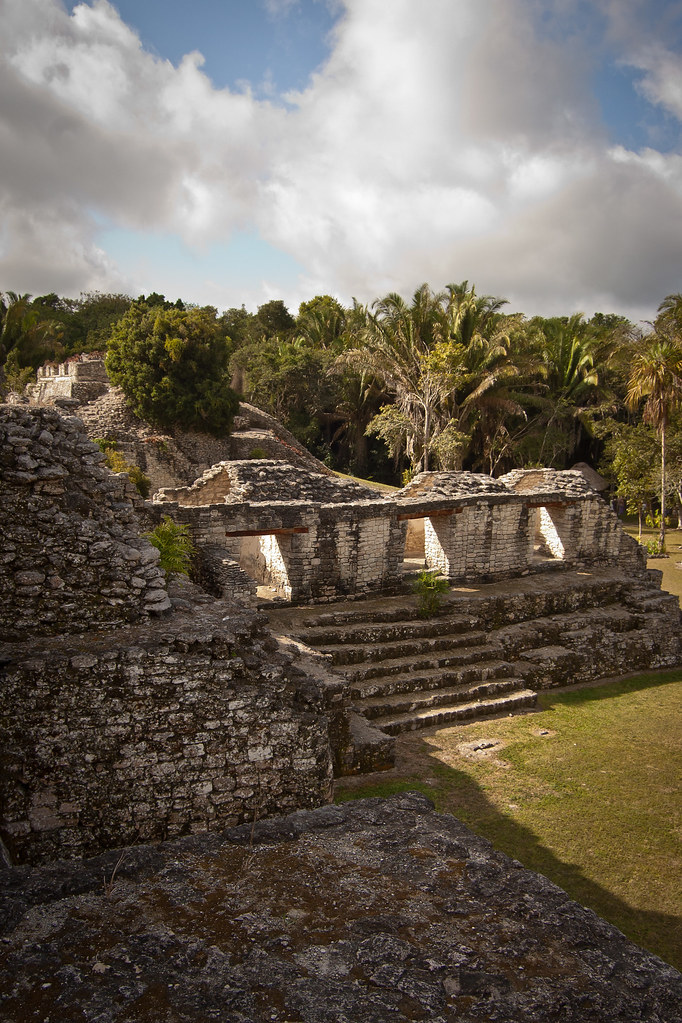
Above: A raised acropolis (or citadel) with the Temple of the King behind
The site was settled by 200 BC, but most of the structures were built in the Early Classic period from about 250 to 600 AD. The city appears to have functioned as a regional centre and stop along the trade routes through the southern Yucatán from Campeche and Rio Bec area to the west, and the cities along the east-coast and to the south, in the el Petén region of Guatemala and neighbouring Belize.
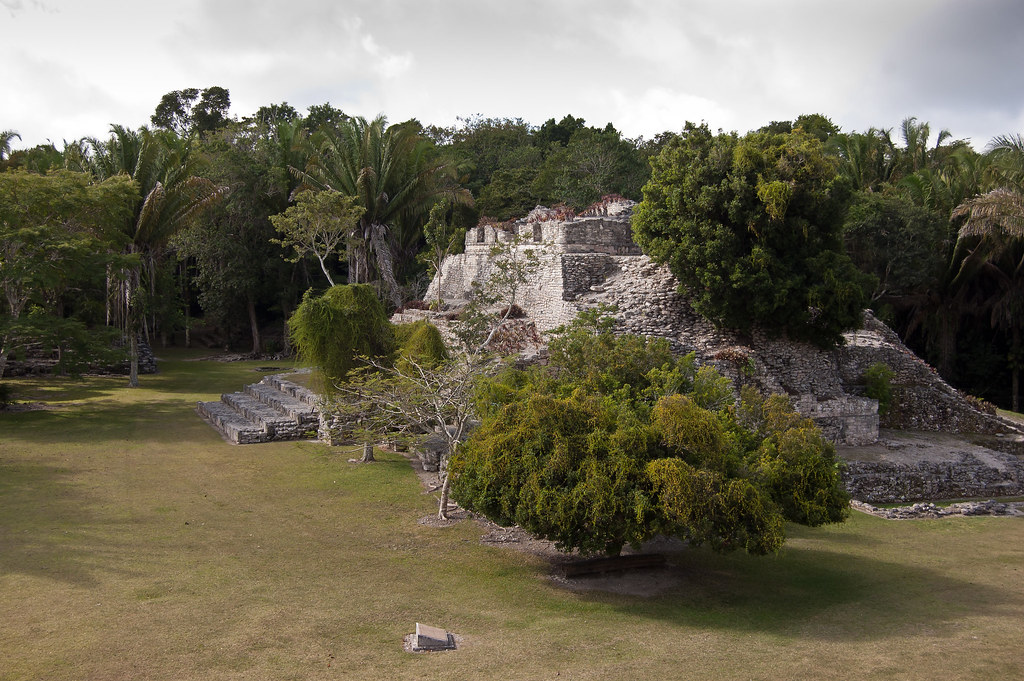
Above: Temple of the King (a palace complex)
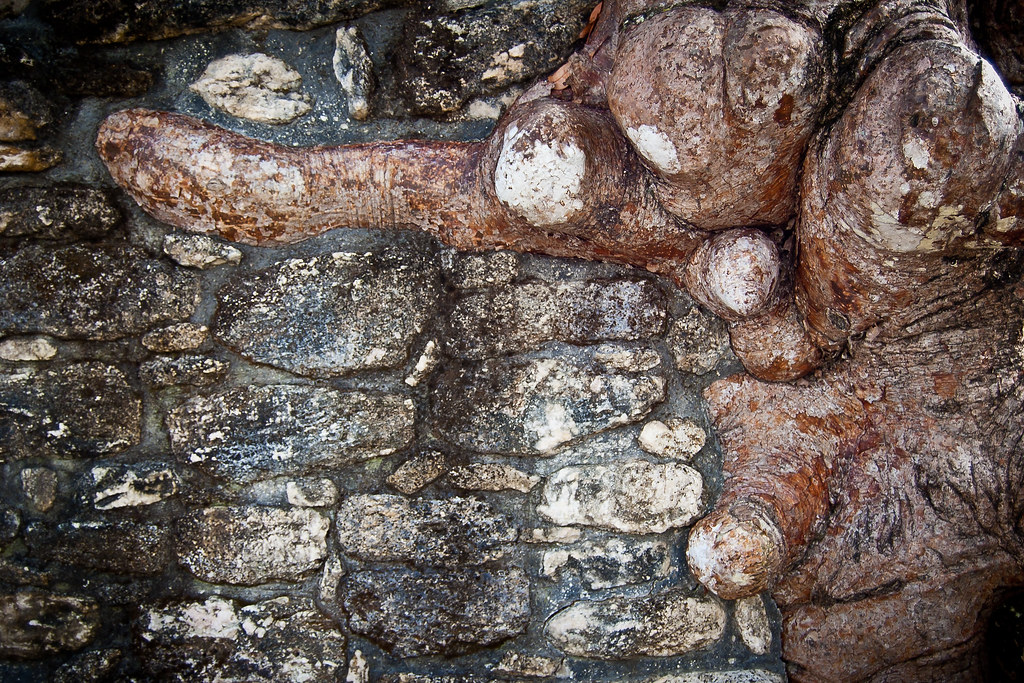
Above: Root and stone intertwine in the wall of the acropolis
The road approaches the site from the north and leads into an enormous central plaza ringed by pyramids and temple platforms. To the north there is a massive, raised acropolis, or citadel, with a palace complex (Temple of the King) around a courtyard to the north-west. Further east there is the Temple of the Masks, built in honour of the Sun God.
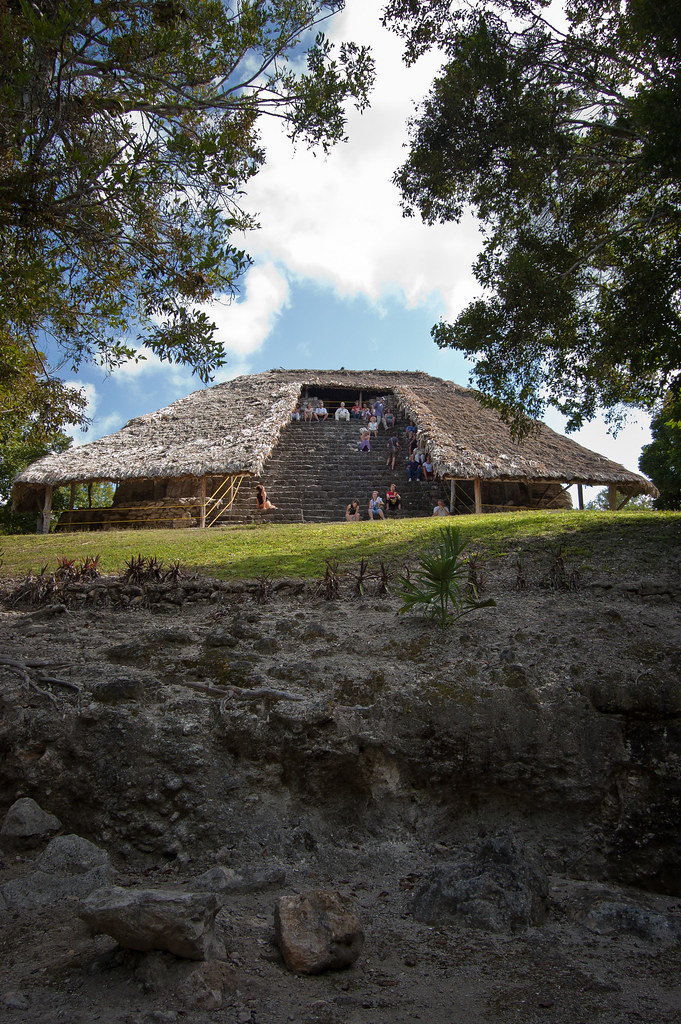
Above: Temple of the Masks. The thatched roofs are to protect the pigment on the masks themselves.
Kohunlich is best known for its Temple of the Masks, an Early Classic pyramid whose central stairway is flanked by large stucco masks. The temple was built around 500 A.D.. After about 700 A.D., the temple was covered over with a Terminal Classic construction, which protected the masks and accounts for their excellent preservation today.

Above: Masks representing the Sun God Kinich Ahau
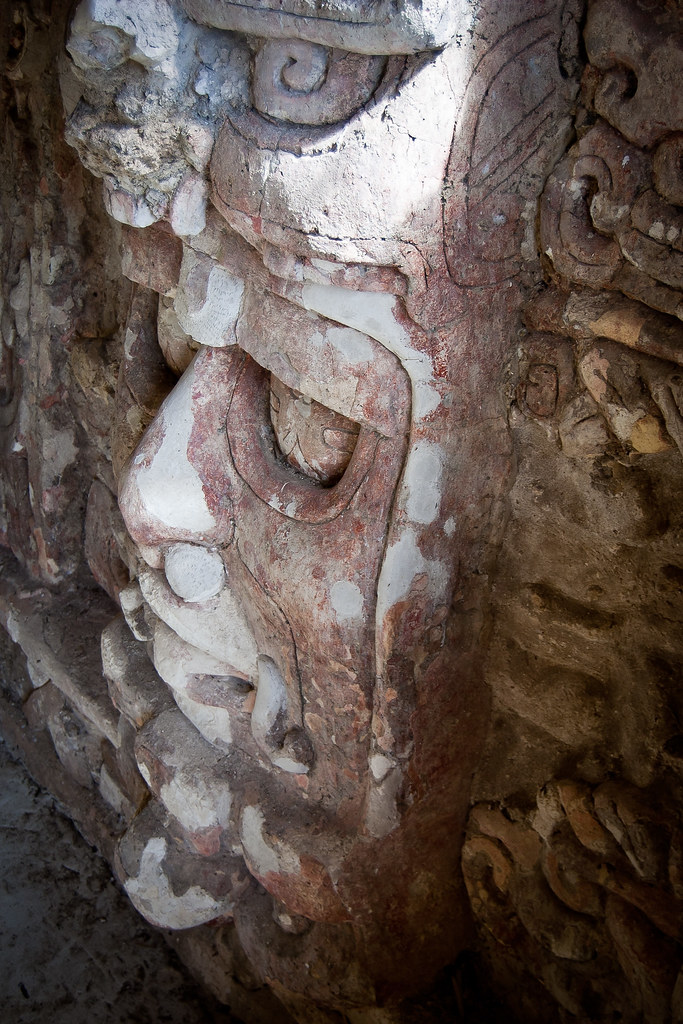
Above: A close up of one of the masks showing the red pigment
Originally there were eight carved masks flanking its central staircase; only five remain, three having been looted. The giant masks represent the Sun God Kinich Ahau however they differ in appearance so it is thought that they also represent the various rulers of Kohunlich.
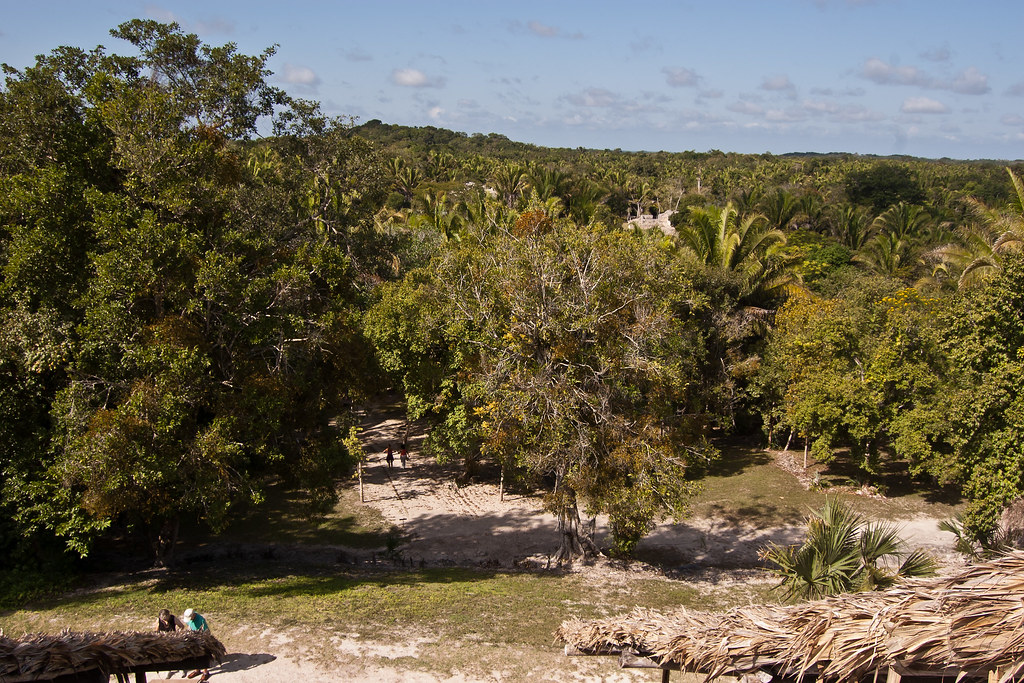
Above: The view from atop the Temple of the Masks
The picture below shows a ball court – the location of a game where two teams aim to hit a target on a wall with a rubber ball using pads on their bodies. After the match, the captain of the winning team would be sacrificed as part of a religious ceremony!
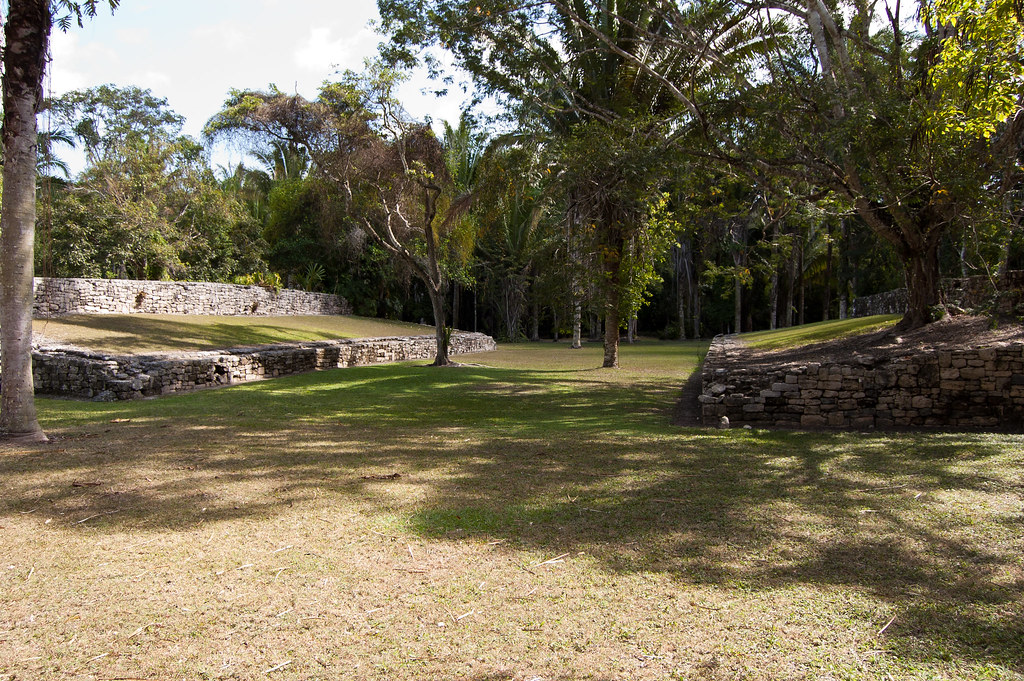
Above: The Ball Court
I had a great time at the Kohunlich Mayan site despite having to get up very early and travel in a coach for 2 hours. We even saw some howler monkeys high up in the trees.
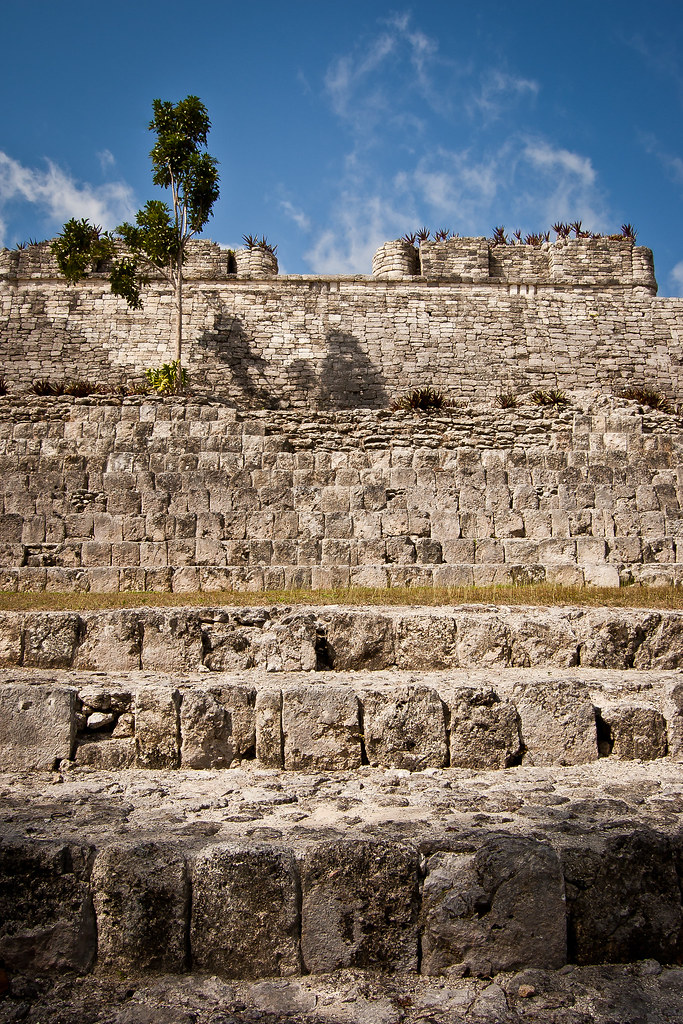
Above: A different view of the Temple of the King
I’ll leave you with another HDR (high dynamic range) photo which I created from three photos of different exposures of the Temple of the King. I hope you enjoyed reading this post. I still have three more ports to tell you about plus lots more coming soon.
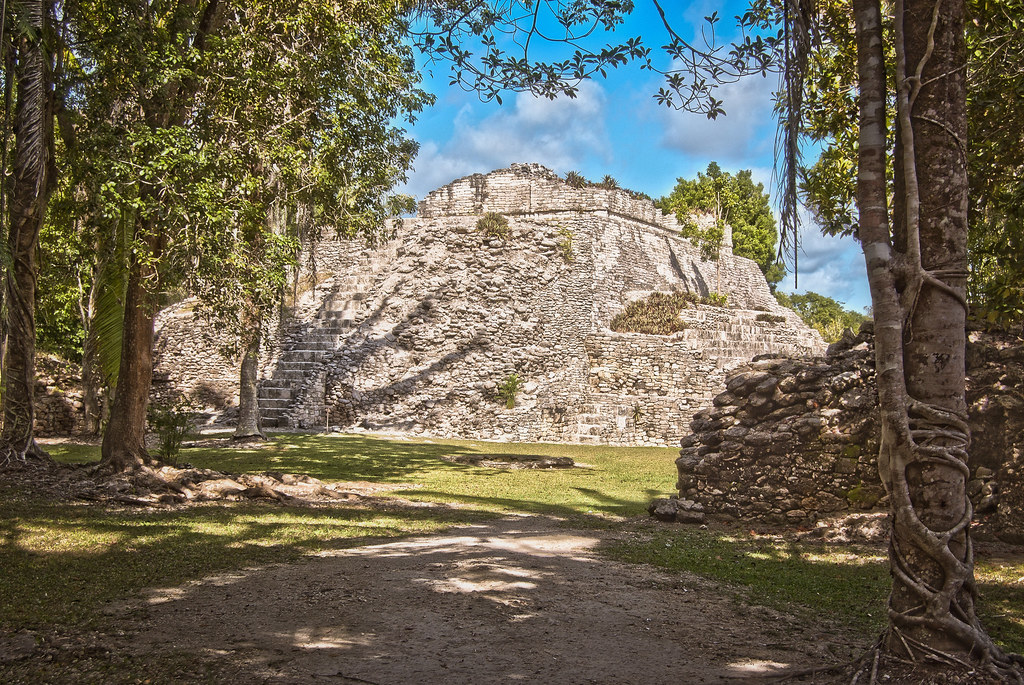
Above: Temple of the King HDR

No comments:
Post a Comment